 At A.C.T. Dust Collectors, we’re dedicated to helping businesses maintain safe and compliant working environments.
At A.C.T. Dust Collectors, we’re dedicated to helping businesses maintain safe and compliant working environments.
This is why the release of NFPA 660 is a major development for industries that generate or handle fine particulates.
NFPA 660 aims to reduce the risk of dust-related fires and explosions, which can lead to serious injuries, property damage, and regulatory penalties if not properly addressed. According to the Bureau of Labor Statistics, 2023 saw more than 5,200 fatal injuries and more than 2,5 million nonfatal injuries and illnesses in the workplace.
Many businesses are already familiar with the patchwork of NFPA dust standards that govern combustible dust hazards. NFPA 660 combines and streamlines these separate codes into one comprehensive framework, making it easier to understand requirements, perform hazard assessments, and implement safety measures. Now, it is crucial to explore what this sweeping new standard entails, why it matters, and how to get your operation ready for compliance.
What is NFPA 660?
NFPA 660 is a consolidated standard designed to unify multiple combustible dust safety regulations into a single, comprehensive document. Previously, businesses had to refer to several separate NFPA standards, each addressing different industries and dust types, to ensure they were meeting applicable requirements. This fractured approach could lead to confusion or duplicative efforts. By merging these standards, NFPA 660 clarifies expectations and streamlines the compliance process, making it easier for manufacturing plants to install dust collection systems that comply with current regulations.
NFPA 660 provides a helpful resource for preventing fires and explosions caused by combustible dust. This standard covers everything from hazard assessment and equipment design to employee training and emergency response. By consolidating these codes, NFPA 660 simplifies compliance for industries that handle combustible dust.
- The standards replaced by NFPA 660 include:
- NFPA 61 (Agricultural and Food Processing): Governs fire and explosion prevention measures for facilities that handle, process, or store agricultural and food products prone to combustible dust hazards
- NFPA 484 (Combustible Metals): Provides guidelines for safely handling, processing, and storing combustible metal dusts (such as aluminum, magnesium, titanium), reducing fire and explosion risks.
- NFPA 652 (General Requirements for Combustible Dust): Establishes fundamental requirements for managing combustible dust hazards across all industries, including hazard assessments and ignition source controls.
- NFPA 654 (Combustible Particulate Solids): Focuses on preventing fires and explosions in facilities dealing with combustible particulate solids, outlining best practices for dust control, ventilation, and housekeeping.
- NFPA 655 (Sulfur): Offers specialized criteria for preventing fires and explosions in facilities that handle elemental sulfur, addressing unique properties and ignition concerns.
- NFPA 664 (Wood Processing and Woodworking): Covers fire and explosion safety protocols specific to woodworking operations and facilities processing wood dust or fibers.
Key Components of the NFPA 660 Standard
NFPA 660 outlines a few core principles for combustible dust safety, which apply to all industries handling or generating particulate matter. These elements ensure that businesses take a proactive approach to identifying hazards and implementing measures to prevent fires and explosions.
Dust Hazard Analysis (DHA)
Under NFPA 660, conducting a Dust Hazard Analysis (DHA) is a critical first step in any safety plan. For example, a metal fabrication shop generating fine aluminum dust might:
- Inspect processes like grinding, cutting, or polishing to determine where dust accumulates
- Assess ignition sources such as sparks and hot surfaces
- Install or upgrade dust collection systems to manage these risks effectively
By addressing these vulnerabilities early on, companies can ensure that their production lines continue running smoothly while minimizing the risk of incidents.
Hazard Mitigation Strategies
Ensuring compliance with NFPA 660 starts with recognizing potential hazards and then actively working to reduce them. Robust dust collection systems often play a central role in mitigating combustible dust risks. However, mitigation strategies should be multifaceted, drawing on various approaches to keep facilities safe. Many facilities find benefit from some of these best practices:
- Control Ignition Sources: Identify and reduce potential spark generation points from machinery, static electricity, and hot surfaces.
- Improve Ventilation: Maintain proper airflow throughout your facility to prevent dust from accumulating in enclosed areas.
- Implement Dust Collection Systems: High-efficiency cartridge dust collectors capture airborne particulates before they spread, limiting dust build-up on floors, walls, and equipment.
- Perform Routine Inspections and Maintenance: Regularly check equipment for signs of wear. Make sure filters, ducting, and collection bins are well-maintained.
- Adopt Housekeeping Measures: Schedule consistent cleaning cycles to remove dust that settles on overhead beams, ledges, or other hard-to-reach surfaces.
By combining these methods, facilities can significantly lower their combustible dust risks and satisfy the core requirements of NFPA 660.
Enhanced Safety Measures
NFPA 660 also outlines enhanced safety measures, including:
- More Employee Training: NFPA 660 emphasizes that well-trained staff are essential for recognizing hazards and responding appropriately when issues arise.
- Emergency Response Planning: Regular drills and updated action plans help employees react quickly and effectively during an emergency.
- Updated Fire and Explosion Prevention Guidelines: Enhanced protocols cover everything from dust control devices to safe handling of flammable materials.
- Additional Equipment Safeguards: NFPA 660 encourages implementing spark detectors, flame arrestors, and automatic suppression systems where appropriate.
Integrating these requirements throughout your facility ensures everyone understands their role in safety, reduces your overall risk profile, and simplifies compliance efforts.
Industry-Specific Considerations
There are industry-specific considerations noted in NFPA 660, including:
- Agriculture: Dust from grains or agricultural products can accumulate quickly in confined spaces like silos. NFPA 660 outlines operational requirements for ventilation, housekeeping, and proper bin management to reduce the risk of ignition.
- Woodworking: Wood dust is highly combustible in many cases where it is dry, increasing the need for a robust dust collection system and thorough housekeeping to build up on surfaces and in ductwork.
- Metalworking: Fine particles from aluminum, magnesium, or steel cutting processes pose a combustion risk; NFPA 660 outlines specialized dust collection and spark control measures.
- Food Processing: Powdered sugar, flour, and other food ingredients can create combustible clouds; compliance focuses on controlling humidity, mitigating static charges, and using effective dust collection systems with proper explosion venting.
Although NFPA 660 offers a unified standard, each industry and facility must adapt specific strategies that align with its unique operational needs and dust characteristics to ensure the facility is operating safely.
Key Changes Introduced by NFPA 660
By consolidating multiple NFPA dust standards, most businesses operating dust collection equipment now have a clearer roadmap for compliance and risk mitigation.
NFPA 660 simplifies the conversation around the importance of dust collection, making it easier for companies to see how improved filtration systems, regular maintenance, and other mitigation measures tie directly into regulatory compliance.
- Key Updates:
- Consolidation of Multiple NFPA Codes: Reduces overlap, making the requirements easier to follow and interpret.
- Expanded Focus on DHA: Stresses the importance of regularly updating DHAs to reflect any process or facility changes.
- Updated Training Requirements: more frequent training sessions and deeper employee engagement in dust safety practices.
- Stronger Emphasis on Maintenance and Housekeeping: Encourages more rigorous cleaning schedules and equipment checks.
- Clarification of Industry-Specific Measures: Offers tailored guidelines for agricultural, woodworking, metalworking, and other sectors.
Compliance Requirements Checklist for 2025
Meeting the new NFPA 660 standards doesn’t happen overnight, but proactive planning can significantly ease the transition. At A.C.T. Dust Collectors, we help our clients to tackle these projects by supplying machinery and equipment:
- Conduct a Dust Hazard Analysis (DHA): Evaluate sources of dust generation and determine the risks.
- Review and Update Dust Collection Systems: Ensure your systems are adequately sized, properly installed, and meet the efficiency standards outlined in NFPA 660.
- Implement Rigorous Housekeeping Measures: Develop a cleaning schedule that targets known dust accumulation points (e.g., rafters, ductwork, hidden corners).
- Control Ignition Sources: Examine machinery for potential spark generation, ensure electrical components are rated for dusty environments, and incorporate anti-static measures.
- Update Employee Training: Provide comprehensive education on combustible dust hazards, safe work practices, and emergency procedures.
- Establish or Revise Emergency Response Plans: These plans should Include up-to-date contact information, evacuation routes, and procedures for responding to fires or explosions.
- Schedule Regular Inspections and Maintenance: Record system checks, filter replacements, and mechanical adjustments to prove your commitment to safety.
Completing these steps will help your facility meet the 2025 deadlines and maintain an ongoing safety culture.
The Bottom line
NFPA 660 represents a new chapter in NFPA dust standards. It makes it easier for businesses to understand their responsibilities while raising the bar for combustible dust safety across multiple industries. The consolidated standard clarifies best practices.
At A.C.T. Dust Collectors, we believe that advanced dust collection systems are a cornerstone of effective combustible dust management. By aligning your safety protocols and equipment with NFPA 660, you’ll protect both your people and your bottom line. Contact us today to learn more about how we can help you.


























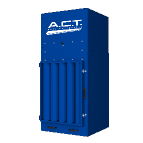
%20Collectors%20Image.png?width=143&height=143&name=ADC%20(Ambient)%20Collectors%20Image.png)
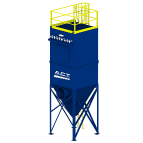

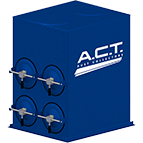
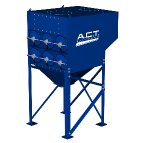
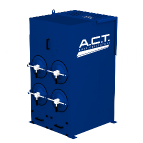


















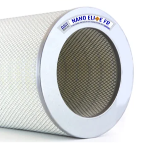


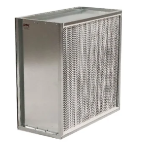
.png?width=240&height=91&name=ACT%20Dust%20Collectors%20Logo%20Solid%20White%202020%20(1).png)
.png?width=148&height=149&name=usa-manufactured-dust-collectors%20(1).png)